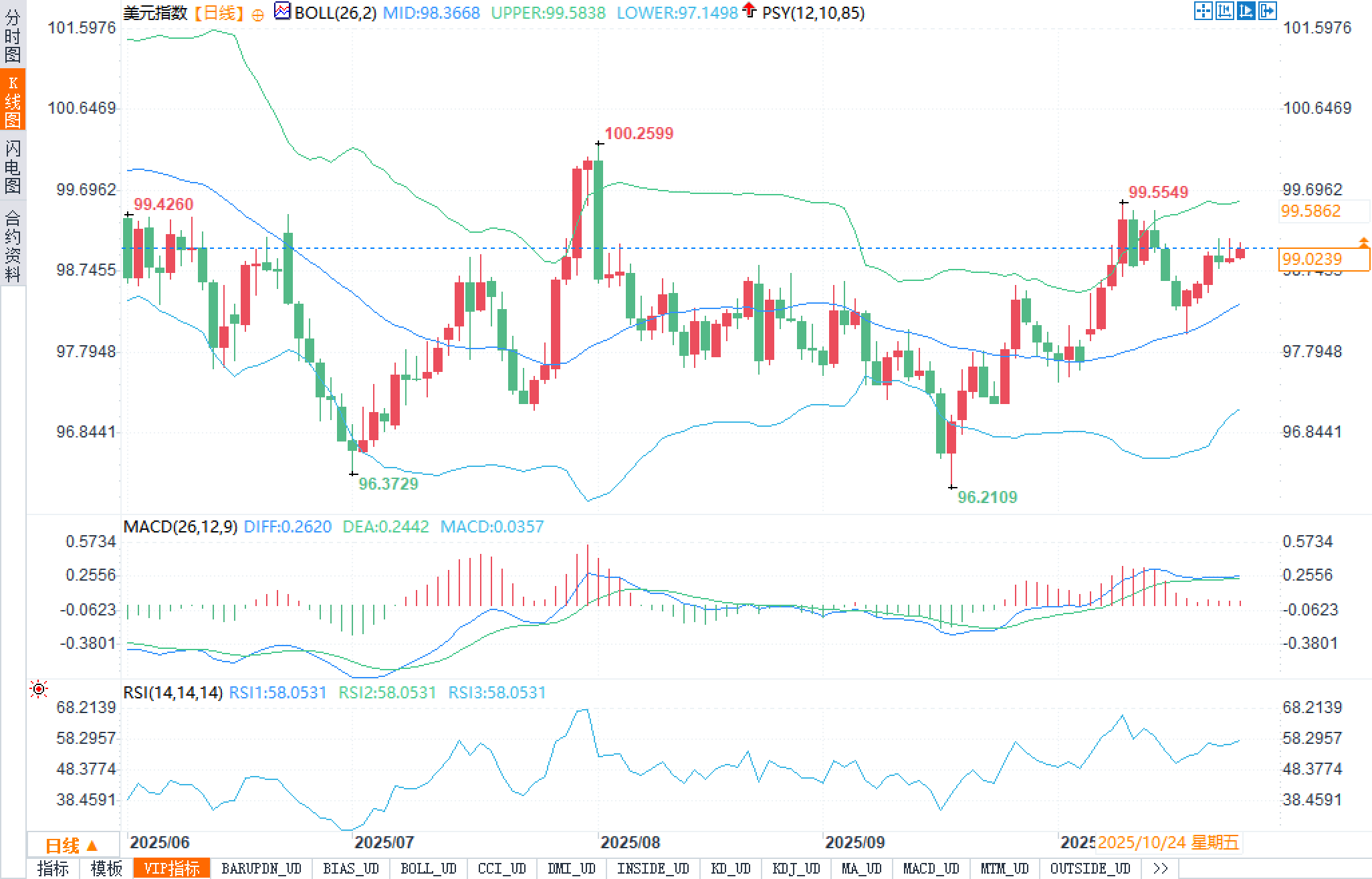“Moderate inflation + moderate momentum”: Will the US dollar index be “boiled like a frog in warm water”?
2025-10-24 19:50:12

Fundamentals
Barclays Bank forecasts a month-over-month increase of 0.36% for the US core CPI and 0.43% for the headline CPI in September. The bank emphasizes that September data collection was completed before the shutdown risk, and its quality is unaffected. A prolonged shutdown could disrupt the collection and quality of October data. Structurally, core goods will dominate, with a forecast of +0.4% month-over-month, reflecting accelerated tariff transmission. Core services are expected to slow to 0.3%, with accommodation-related components contributing to some easing. Consequently, core PCE growth is projected to be approximately 0.31% month-over-month, 9 basis points higher than in August.
Looking ahead to the end of this year and early next year, Barclays believes that tariff pass-through will remain "stable but elevated," with a high probability of core CPI maintaining a "rounded" monthly rate of 0.4% for the next several months, until January 2026. Based on its retrospective experience, tariff-related price increases have so far reached approximately 40%. Consequently, core CPI growth could rise to 3.5% year-on-year in December this year, before falling back to 2.7% in December 2026. Under this inflation trajectory, the Federal Reserve still has room to cut interest rates this month and December, as private sector employment and consumption trends have not deteriorated significantly.
In contrast, Citigroup's September core CPI forecast is 0.28% month-over-month. Its narrative remains "slightly stronger goods, while services continue to decelerate (particularly accommodation)." On the goods side, seasonality may boost short-term strength in sub-sectors like autos. On the services side, the unexpected strength in landlord equivalent rents in August is unlikely to be sustained, and accommodation inflation is likely to decline in line with the decline in new leases and housing prices. Citigroup has not factored in the recent increase in tariffs in its baseline scenario, but sees this as an upside risk for early next year. If the additional 100% tariffs take effect on November 1st and persist for some time, prices could even be pushed up passively through "shortages" rather than "direct pass-through." Regarding wages, the Atlanta Fed's wage tracker shows signs of cooling for those who remain employed, suggesting that the "catch-up" wage increases of the past two years are easing, paving the way for a subsequent deceleration in services inflation. Therefore, Citigroup still supports further interest rate cuts by the Federal Reserve this year and next.
The two institutions' disagreement centers on whether the core monthly interest rate is in the 3-digit range or the 2-digit range, but both agree that inflation is trending moderately and does not hinder easing. This combination of "still-sticky inflation and looser policy" typically has a phased impact on the US dollar index: if the market focuses on a downward shift in the nominal-real interest rate differential, the dollar will be under pressure; if concerns about secondary inflation and catch-up gains from tariff transmission increase, the dollar's safe-haven and discount compensation will be repriced.
Technical aspects:
The daily chart shows the upper Bollinger Band at 99.5838, the middle Bollinger Band at 98.3668, and the lower Bollinger Band at 97.1498, with a width of approximately 2.43, indicating a medium level. The price is currently trading between the middle and upper bands, approximately 0.56 from the upper band and approximately 0.66 above the middle band, indicating a "slightly strong consolidation above the central axis." Key technical anchor points are: the high of 100.2599, the recent high of 99.5549, and the lows of 96.3729 and 96.2109.

MACD (26, 12, 9) parameters show DIFF 0.2620, DEA 0.2442, and bar chart 0.0357, indicating positive momentum but limited strength, favoring a "modest bullish trend" rather than an accelerated uptrend. The RSI, at 58.0531, is in the bullish zone, "just below the mild overbought level," highlighting the absence of trend or structural divergences.
Comprehensive Interpretation: The middle Bollinger band at 98.3668 provides dynamic support, while the upper band at 99.5838 and the historical point at 99.5549 form a "combined resistance zone." A breakout above and consolidation of the upper band on large volume could trigger a retest of 100.2599. A dip below the middle band would test the lower support at 97.1498. The pattern resembles a repeated retest of the upper edge of a box with its upper edge intact, with no signs of accelerated expansion of the valid trendline.
Market outlook:
Short-term (next 1-2 weeks): If CPI falls near Citigroup's target of 0.28% and services continue to cool, the US dollar index is likely to cycle through the upper Bollinger Band, testing the bottom again, and then retesting again. The core range is 98.37-99.58. Upward momentum is needed to break through, while downward momentum will depend on the effectiveness of the middle band retest. If the data approaches Barclays' 0.36% and the market increases its weighting of tariff transmission, the US dollar is expected to make a short-term attempt above 99.58, but it remains to be seen whether the histogram can expand to avoid a false breakout.
summary
The US dollar index is currently in a critical zone near 99. Fundamentally, inflation remains viscous, but slowing service rates and easing wages provide a buffer against easing. Technically, the price is midway between the middle and upper bands, with the MACD and RSI pointing to a positive trend but not a radical one. If it breaks above 99.58 and establishes a resonance between volume and momentum, 100.26 is within reach. However, if it falls back below 98.37, caution is warranted regarding the downside risk of a retest of 97.15.
- Risk Warning and Disclaimer
- The market involves risk, and trading may not be suitable for all investors. This article is for reference only and does not constitute personal investment advice, nor does it take into account certain users’ specific investment objectives, financial situation, or other needs. Any investment decisions made based on this information are at your own risk.





















